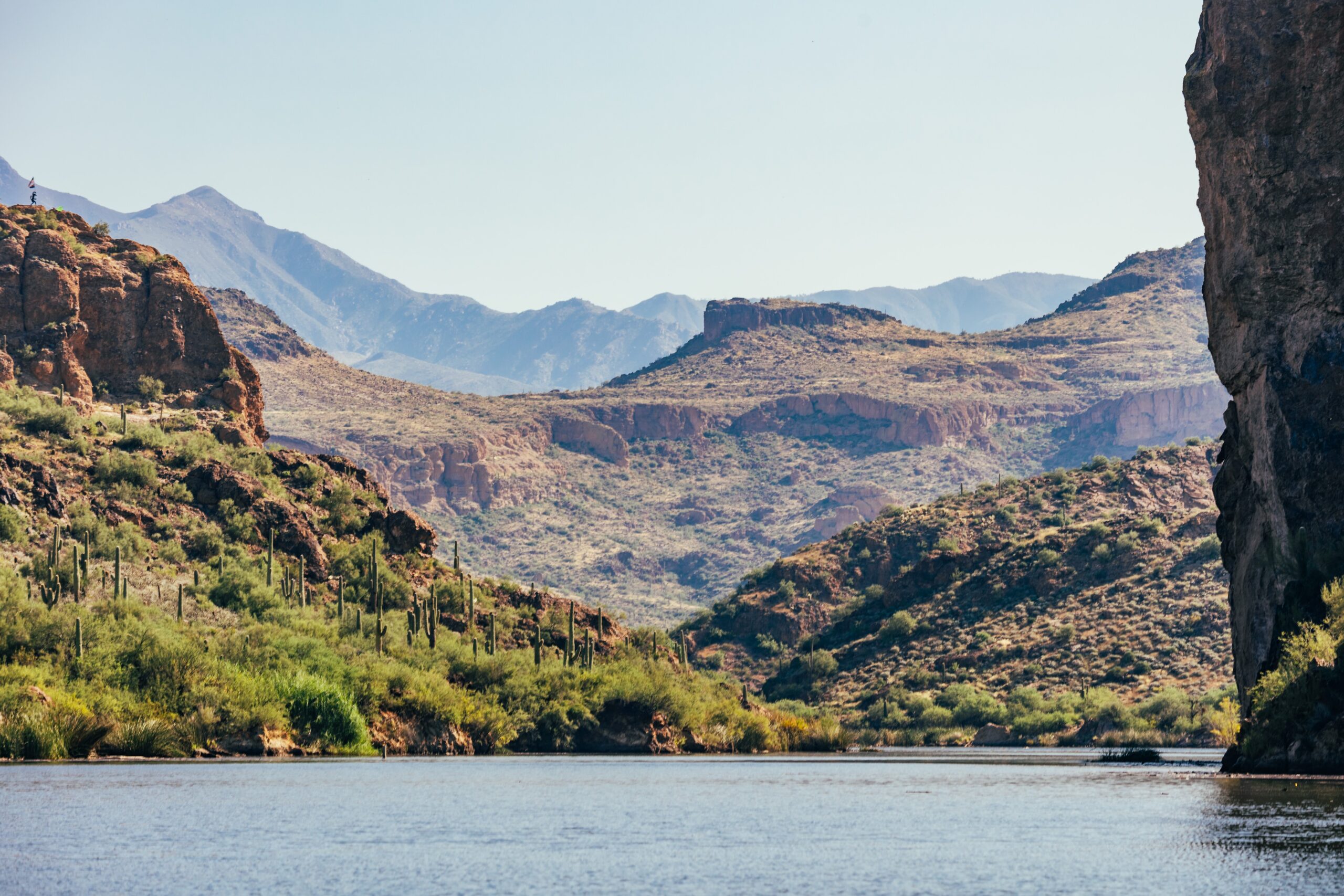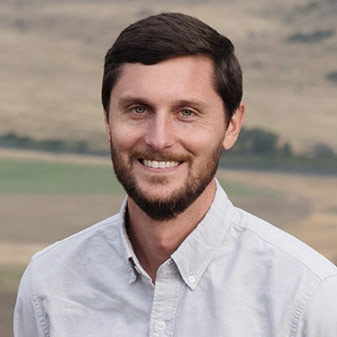DOWNLOAD THE REPORT
Executive Summary
Arizona is in the middle of one of the worst droughts in its history. Water supplies throughout the state are dwindling. The state is facing drastic cuts to its Colorado River allocations, posing a major threat to its water supplies. Recognizing the severity of the situation, state lawmakers committed $1 billion in 2022 to find solutions to this pressing issue.
The state has long been a leader in water conservation, but today’s drought is creating new challenges. Policymakers are considering several strategies to augment the state’s water supplies, such as water reuse and desalination, while also plugging leaks in existing water supply “buckets.” In addition, a variety of legal barriers prevent water from being allocated efficiently, including a lack of clarity over water rights in large parts of the state. And groundwater remains an open-access resource in much of the state, draining aquifers that many agricultural communities depend on.
With water supplies dwindling and Arizona’s population expected to continue rising in the next two decades, the time is now to address the state’s looming water crisis.
Victor Riches, President and CEO of Goldwater Institute

Recommendations
Improve legal and policy institutions so the markets for surface water flourish.
- Expedite adjudications to help water-rights owners clarify and secure their property rights.
- Establish a state water trust to facilitate market trading and lower transaction costs.
- Empower farmers to engage in beneficial water transfers, even outside of irrigation districts.
Clarify rights to groundwater and innovatively use markets to ensure the sustainability of groundwater basins.
- Empower groundwater users to form Active Management Areas and set management goals.
- Deploy funding for groundwater monitoring devices to assist with management.
- Allow banking of surface water rights in local groundwater aquifers.
Explore strategies to augment water supplies while weighing costs and benefits.
- Remove regulatory barriers to direct potable reuse by municipalities.
- Explore creative interstate opportunities to collaborate to increase water supply.
- Avoid strategies to increase water supply that are not cost-effective.
Support voluntary water conservation in urban areas.
- Support municipalities establishing voluntary, incentive-based xeriscaping programs.
- Champion continued indoor water reuse.
Introduction
Arizona arguably leads the nation in water conservation efforts. Cities such as Phoenix already reuse the vast majority of treated wastewater. The state established a system to manage groundwater pumping in fast-growing areas decades before neighbors such as California. And Arizona has built and put to use significant infrastructure to store water above and below ground.
These efforts have paid off, allowing Arizona’s population to grow while using less water over time. In 2017, water use statewide was less than it had been 60 years earlier, despite the fact the population grew seven-fold over the same period. Arizona has also prudently planned for the long term by storing roughly 3 trillion gallons of water in underground aquifers, equivalent to the amount needed to supply Phoenix for three decades. Arizona’s water is shared among a variety of users. Agriculture accounts for 72 percent of all water used in the state, municipalities account for 22 percent, and industry for six percent. These users draw on several sources, including in-state surface waters, locations from the Colorado River, groundwater, and reclaimed water. Surface water from rivers accounts for a little more than half of all water used in the state, with the Colorado River alone providing about one-third of that state’s total supply. Groundwater accounts for about 40 percent of supply, while reclaimed water makes up five percent.
These sources are facing increasing threats due to drought and the state’s arid climate. Arizona has junior rights to the Colorado River compared to other states in the basin, which means that it is disproportionately impacted by cuts to water supplies. As the state’s climate becomes hotter and drier, it will be increasingly difficult for Arizona’s water systems, which are already overallocated in many cases, to meet demand.
Last year, legislators allocated $1 billion in funding to water projects, but the state has yet to determine how it will spend many of these funds. Ideas to address supply shortfalls include increasing the reuse of water, importing water from eastern states, and building or funding desalination plants. If pursued in a cost-effective manner, these strategies may eventually prove useful, but they alone will not address the state’s water shortages. To truly address the challenges of water scarcity, Arizona policymakers should pursue reforms that use water markets to improve water use and allocation. Allowing water rights to be voluntarily traded among competing users rewards conservation, motivates efficient use, and encourages cooperation instead of conflict.
Delivering better water conservation does not require a dramatic expansion in the role of government. On the contrary, promoting more efficient use of water will yield reforms that allow markets to function better. Responsibilities such as defining property rights and adjudicating disputes are traditional, anodyne roles for government, and markets are better at revealing opportunities than governments are at predicting them, including when it comes to the potential for conservation. Also, markets lead to voluntary win-win outcomes, while political allocation of resources entails government picking winners and losers.
There are numerous ways that market-based approaches can increase water efficiency while leaving the party that reduced water use better off. One innovative example from the Verde Valley demonstrates how water conservation can benefit agricultural producers. Farmers, local entrepreneurs, and investors that included The Nature Conservancy collaborated to find a creative way to conserve water. Investment in a commercial malting facility provided local farmers with a market for barley, which uses much less water than alternatives such as alfalfa. The farmers involved spread risk by diversifying their crop portfolio and maintained profits by being able to sell into a new barely market. Innovative strategies that produce water conservation while keeping farmers farming are likely to be more popular than those that pit rural against urban interests in a zero-sum framework.
Water markets depend on water rights being clearly defined, enforced, and transferable. Yet in much of Arizona, legal and policy barriers impede beneficial water transfers. Moreover, uncertainty about ongoing adjudications of water rights in much of the state hamstring reforms that could ensure water is used where it is most valued. Decades-long adjudications of the Gila River and Little Colorado River watersheds, for example, are still working to clarify water rights across large areas of the state.
Another opportunity relates to groundwater in rural parts of the state. Five largely urban areas of the state are designated as Active Management Areas, where groundwater use is managed to avoid depletion. In many rural areas, however, groundwater essentially remains a common-pool resource where rights are undefined and pumping is largely unrestricted. As a result, water levels in many of these basins are rapidly declining, threatening the agricultural communities that rely on them.
This report offers detailed recommendations for reforming Arizona’s water policy to address the state’s water challenges. While opportunities exist to augment water supply in the future, there are several opportunities to improve the way water in the state is conserved and demand is managed.
This report was a collaboration by PERC and Goldwater Institute.






